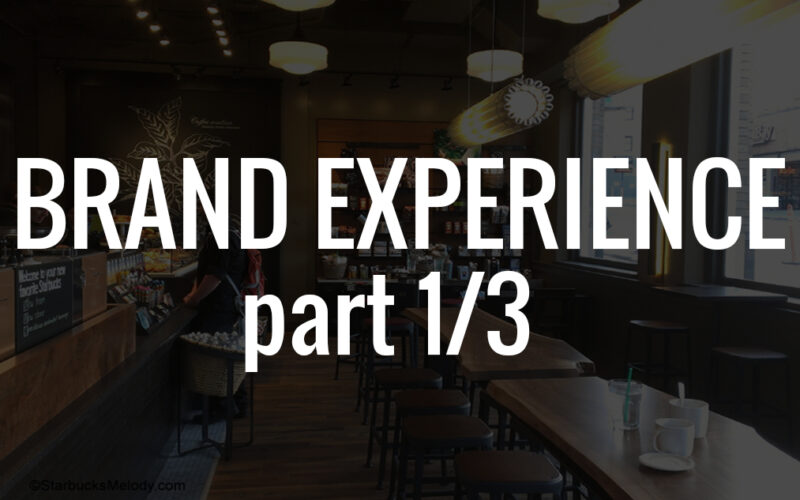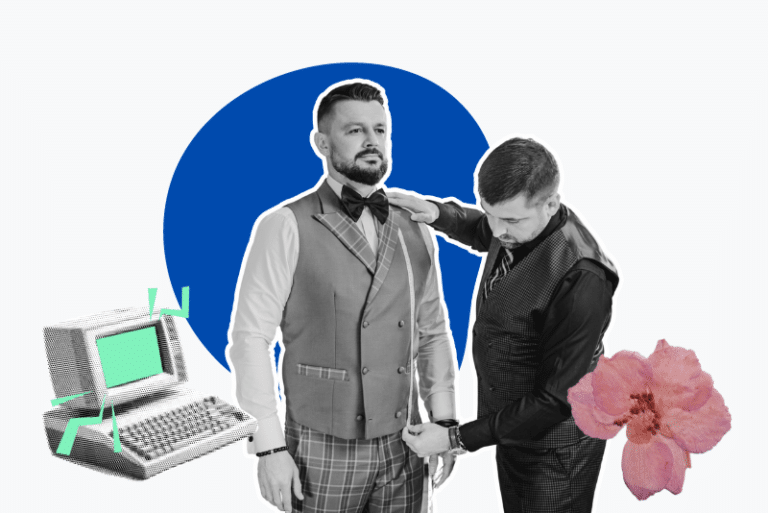Part 1 of a three-part series on brand experience management. Stay tuned!
Consumers today are overwhelmed with choices made increasingly difficult as a result of product and service parity, commoditization, and micro-segmentation. Brands have to compete beyond just what they offer in products and services. They must be prepared to reinforce brand loyalty through compelling experiences before, around, during and after direct engagement with the product, service or company.
Brand experience has become the driving force behind brand differentiation
Certainly companies have to deliver products and services that meet, if not exceed, customer expectations but the context around how those are delivered have become equally important.
The reason that some of us pay more for coffee at Starbucks rather , shop at Target instead of Wal-Mart or prefer an iPhone over a Galaxy is because the experience with those brands is different, special, and in step with a complementary lifestyle. According to a 2014 Gartner survey:
“89% of marketing leaders expect to compete primarily on the basis of customer experience by 2016, as compared with 36% four years ago.” 4

Gartner studies go on to report that competitive differentiation achieved through the development of better products or by being the most efficient producer of a service is diminishing. Creating the superior customer experience will be a sustainable differentiator.
Even though product and service quality will forever remain critically important, greater attention is being focused on the merits of brand experience management. Because of this trend, companies are spending more time, energy and resources on experiential design, staff training and ensuring continuity across points of contact—through all channels and all media.
Understanding what influences these points of contact through a customer experience journey is essential in planning how to effectively manage that experience.
What Shapes the Brand Experience?
The brand experience is principally shaped by seven different types of experiential stimuli and influences:
- Engagement is the interaction that occurs in the course of the experience.
– In a retail sales context, this would be the shopping dynamics, behavior of sales staff, the sales transaction process, and anything else directly affecting personal interaction.
– In an online experience, navigation, content organization, and transaction interface imbedded into the website are key influencers.
Customer service is one of the most important contributors to engagement. A 2013 survey of customer service from mid-size companies conducted by Dimensional Research found that customer service was the No. 1 factor impacting trust and confidence. 5 The same study also found that bad customer service was shared more broadly and longer than good customer experience.”
- Environment is the physical surroundings within which the experience occurs. It is what provides context to the experience and most notably is affected by the fives senses (sight, smell, hearing, taste and touch). These can be in the form of a “microenvironment,” like a supermarket or restaurant. In a hotel, for example, these can include the building architectureBrand architecture defines the role of each brand and acts as a guideline for the interrelationship between the brands in your organization. More, layout, interior design, furniture, lighting, climate control and any other aspect related to the hotel’s physical presence. In some cases the environment can also be branded like Pizza Hut with its distinctive roof that is a strong signal of its brand. Macro environments are multi-experiential journeys like airline or train travel.
- Communication is any form of visual and verbal communication that facilitates the engagement and adds to the total experience. This can include “hard graphics” like signage, promotional graphics, packaging design, vehicle graphics, uniforms, and instructional graphics. “Soft graphics” includes motion graphics, video, broadcast, and all forms of digital and social media. Communication is also the vehicle that more directly signals the brand through prominent use of the brand identity.
- Product Benefit is what you receive or is transferred to you through the experience or engagement with the service or product (real or virtual). In retail these are the products purchased, in banking they are the financial services provided, and in travel it is the passage from origin to destination.
- Expectation is the preconceived notion of what you think is going to happen or what you think you are going to get. This can be influenced through previous experience, advertising, social media, friends, family and acquaintances who have impressions about the brand. Online reviews like Yelp, TripAdvisor, Angie’s List and others have now become a driving influence on decisions to engage with the brand. Several studies have shown that:
“80%–90% of customers are influenced by online reviews.”9
How your expectation compares to what actually happens will influence perceptions around that experience. Does the giant scrumptious-looking hamburger sandwich you see in a TV commercial look anything like the one you actually get? Does the “flying the friendly skies” promise reflect the reality of what you experience?
- Recollection is how you remember and describe the experience and is what shapes your opinion about the next encounter. Recollection reveals and accentuates what really went well and what really went bad. Everything in between becomes a blur and will soon be forgotten. Managing “Brand Memory” is an important part of managing the brand experience and it is that memory that is broadcast to friends, acquaintances and recorded in online reviews.
The sum total of these shape the sensations, feelings and impressions associated with a brand.
All points of contact in the brand experience journey present an opportunity to reinforce, or have the potential to undermine, loyalty to the brand. The degree to which you can control these, however, is the question.
Next: Part 2 – What you can’t control might matter more than what you can!
References: 1Can Starbucks Make 23,000 Coffee Shops Feel Unique? 2Starbuck Store Design. 3Elevating the guest experience. By Lulu Raghaven. 27 September, 2010. Landor. 4Customer Experience Is the New Competitive Battlefield. By Ed Thompson and Jake Sorofman. Gartner, Inc., 4 June 2015. 5Customer Service and Business Results: A survey of customer service from mid-size companies, Spring 2013. Dimensional Research.








